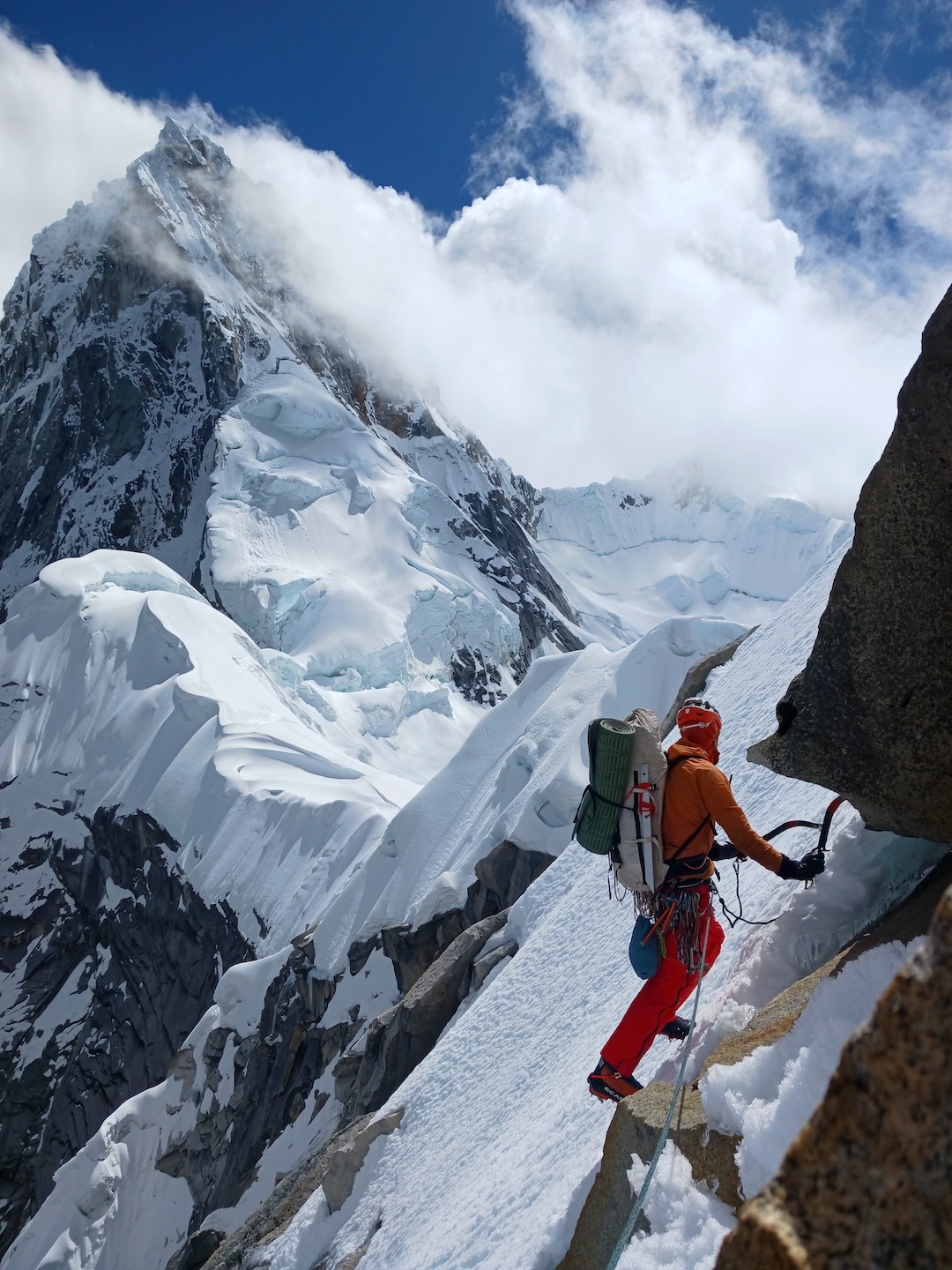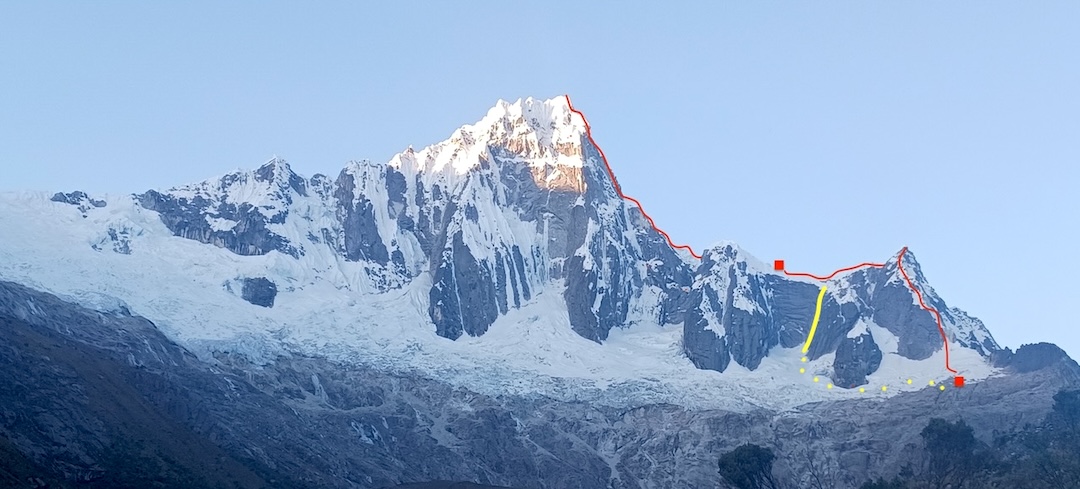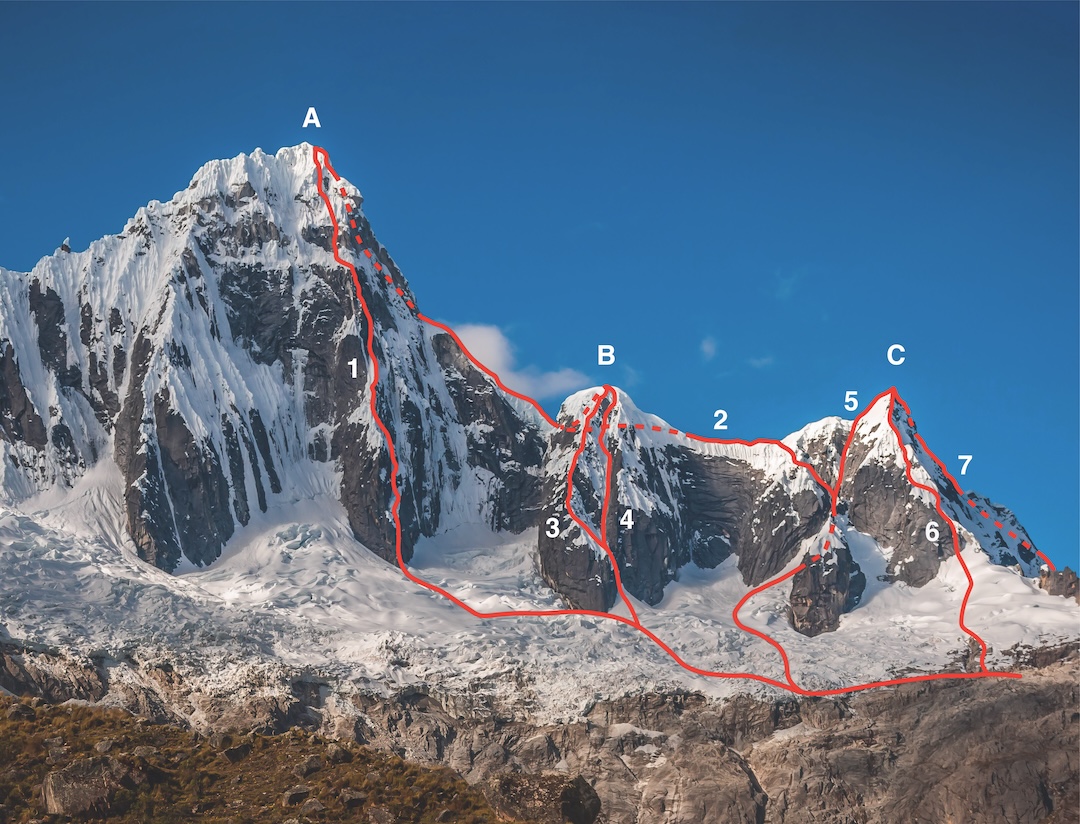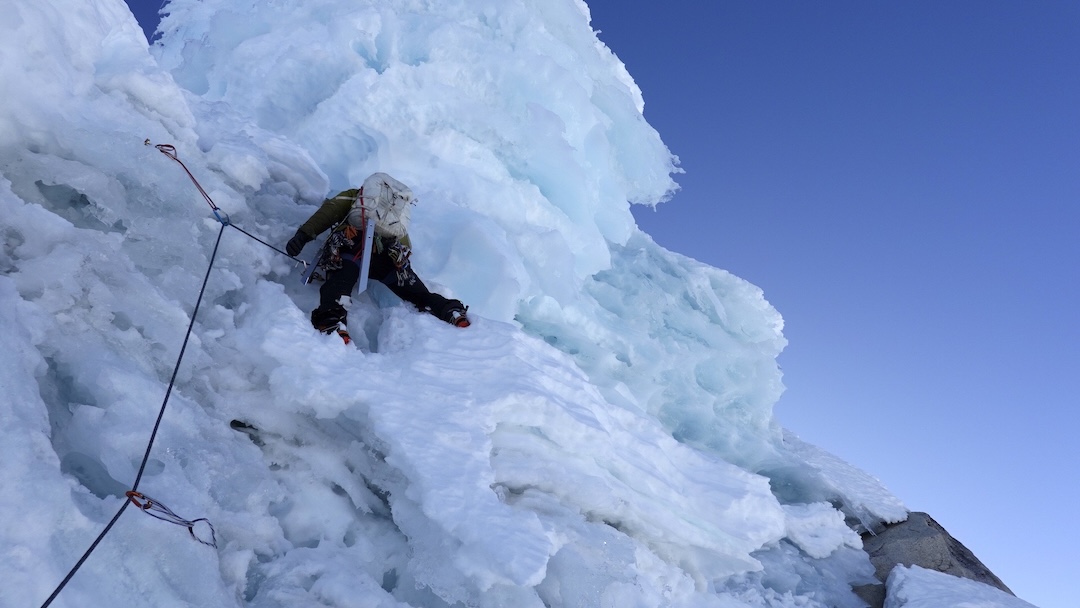Taulliraju Sur, West Ridge, and La Travesía de los Burros
Peru, Cordillera Blanca
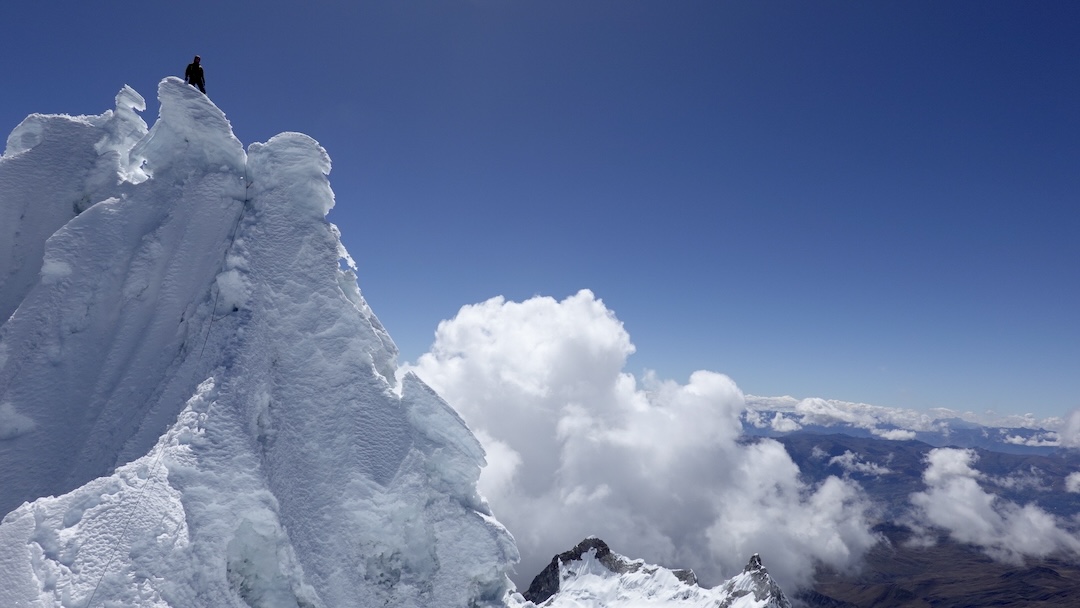
From July 10 to 12, 2023, Tucker Merrill (USA) and I climbed a new line on Taulliraju Sur (ca 5,400m), the highest summit on the lower southeast ridge of the Taulliraju massif. We then traversed to the southeast ridge of Taulliraju itself and climbed to its 5,830m summit.
On July 10, we woke at our high camp and started up Taulliraju Sur in a shallow right-facing corner (M5) on the west face. Once past this, we transitioned to simul-climbing on névé. After reaching a false summit we traversed the west ridge, ascending and descending past loose granite blocks, cornices, and crumbling “kitty litter.” A series of mixed pitches got us to better névé and finally the summit of Taulliraju Sur. [Taulliraju Sur may first have been climbed in 2001 via an ice/mixed route on its northwest flank called Middle Earth (Donahue-Gribble); the report covering their climb mistakenly called the peak Tuctubamba. The south ridge of Taulliraju Sur was climbed in 2016 by a trio from New Zealand (Fortune-Pearson-McDowell).]
We descended the ridge to the north toward Taulliraju. As the sun intensified, progress required inching across precarious snow. Each leader ran the rope out before painstakingly excavating anchors. Beyond the low point in the ridge lay a sheltered depression in the snow, perfect for pitching our single-wall tent.
The following night, we left by midnight with light packs on easy glaciated terrain, only to be slowed by knee- to waist-deep snow. We methodically trenched a path, marking crevasses for the return. We bypassed the top of the GMHM Buttress, then started up moderate snow and ice on the lower southeast ridge of Taulliraju proper.
Tucker tackled the first pitch, a mixed gully (M4) leading to a ramp littered with granite blocks. The final 40m of his pitch involved swimming up a half-pipe of unconsolidated snow. On the next pitch, my tools were racked as I plunged my hands deep into the snow, using them like paddles. I arrived at a wall of vertical ice. We believed this might be the last pitch—but more was in store.
The short but steep section that followed was AI5. After a couple of strenuous body lengths, I reached an overhanging section. I began excavating through the mushroom-like feature, revealing thin veils and threads of ice beneath the snow. It looked like Swiss cheese. Hooking my heels and legs through the holes, I excavated upward. I placed one screw sideways, then girth-hitched an alpine draw through the hole as protection.
On the next pitch, we found a weakness in the wall to the right and Tucker shimmied across a thin foot rail of ice and snow with his tools placed in the sn’ice above. He got to a thinner part of the cornice and broke some off before fiddling upward. It was a short but very committing pitch.
We were atop a large flat section, with no anchor in the faceted snow. A stone’s throw away was a steep, faceted ramp leading to the summit. The snow was so translucent you could see through it. Spurred on by my feverish four-year dream of climbing Taulliraju, I gingerly led upward. Twenty minutes later, I edged above the crest. The top seemed more stable, and I was permitted to summit Taulliraju.
I downclimbed back to Tucker, who remained at the belay below the summit. Near the end of the ramp, where it met the flat section, the snow collapsed and I took a small fall—a sobering reminder of the mountain’s fragility.
We continued the descent and tried all our tricks with snow anchors, but nothing was even half reliable. The safest thing was to make a deadman, have someone sit in a deep bucket seat, and methodically downclimb and reverse the sections, after which we could build an anchor. The second would downclimb, risking a large pendulum into free space.
We reached some ice and made V-threads to abseil back to our trench and the easier ground leading back to our bivy. Early the next morning, we broke things down and began the long traverse toward Taulliraju Sur. The early hours allowed faster travel on hard snow, but we decided that instead of climbing over Taulliraju Sur, we'd try our luck rappelling down the steep face to the west. Using double ropes, pitons, nuts, and threads, we abseiled to the glacier. We eventually arrived at high camp and then down to base camp.
As thanks to the burros that brought our gear to base camp, we named our route La Travesía de Los Burros (ED1 AI5 M5 100°).
—Jonathan Sage, Canada


